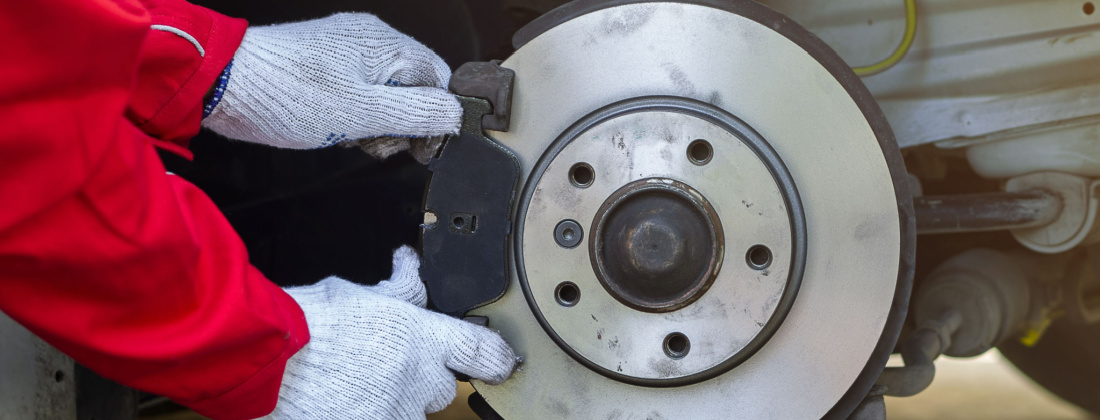
Brake Services at Ward Tire
Nothing is more vital than your brakes to keep you safe on the road. They not only keep you secure, but they also keep everyone around you safe. Best of all, they aren’t expensive to repair, and if you recognize the warning signals that your brake pads need to be replaced, you might save yourself hundreds of dollars over the life of your car.
Learn all about vehicle brakes and their functioning below.
What are Brakes?
A brake is a mechanical device that hinders motion by absorbing energy from a moving system. They are used for slowing or halting a moving vehicle, wheel, or axle, or preventing its motion, usually achieved by friction.
Although various techniques of converting energy can be utilized, most brakes use friction between two surfaces being squeezed to transfer the kinetic energy of a moving item into heat. Regenerative braking, for example, turns a large portion of the energy into electrical energy that may be stored for later use.
Different kinds of Brakes
The most crucial safety characteristic of any car is its brakes. Understanding the various types of brakes inside and across a variety of vehicles may help you feel more educated when caring for and maintaining your brakes.
Disc Brakes
Disc brakes are made of a braking rotor directly linked to the wheel. The master cylinder’s hydraulic pressure forces a caliper (which holds the brake pads just outside the rotor) to compress the brake pads on each side of the rotor. The friction between the pads and the rotor slows and stops the vehicle.
Drum Brakes
Drum brakes are made up of a braking drum linked to the wheel’s inside. When you press the brake pedal, hydraulic pressure pushes two brake shoes on the braking drum. This produces friction and slows or stops the vehicle.
Emergency Brakes
Emergency brakes, referred to as parking brakes, are supplementary stopping systems that operate independently of the service brakes. While there are several emergency brakes (a stick lever between the driver and passenger, a third pedal, a push button or handle near the steering column, etc.), practically all emergency brakes are driven by wires that exert mechanical pressure on the wheels.
They are most commonly employed to keep a car still while parked, although they can also be utilized in an emergency if the stationary brakes fail.
Anti-lock brakes
Most modern automobiles include anti-lock braking systems (ABS). If the stationary brakes are quickly engaged, ABS prevents the wheels from locking up and prevents the tires from sliding. This ability comes in handy especially while driving on rainy and slick roads.
Components of a Braking System
An effective braking system includes numerous components, a few of them are as follows:
Brake Pads
Typically brake pads are an essential component of your vehicle’s braking system and play an important role in making your car stop when you use the brake pedal. They are made from a flat steel piece with a thick friction surface. The brake pads and disc come into contact when depressing the brake pedal. The wheels cannot turn as a result of the friction caused by this.
Brake Fluids
Brake fluid is an essential component of the hydraulic braking system. Brake pressure pushes fluid into the brakes, forcing the pads to grip the rotors, which are linked to the wheel hubs and spin as the wheel revolves.
The automobile slows down due to excessive pressure. There is no way to stop the automobile without brake fluid. To aid in the creation of pressure, brake systems are sealed. If there is a leak in the system and the car is leaking braking fluid, the brakes will not work properly. Brake fluid leakage may be quite dangerous, therefore it is recommended to avoid driving the car until a professional can thoroughly examine the system.
How do brakes work?
Your brake system depends on each connected brake part to perform successfully and safely, much as your ankle bone and foot bone do.
Working of Brakes
By depressing the brake pedal, you may engage the cylinder that sends brake fluid to the calipers, which then engages your brake pads. The friction from applying pressure from your brake pads to the rotors causes your car to stop, everything is related.
All your braking components work together to provide safe and precise stopping force, an essential and significant function.
Pros and Cons of using highly-efficient brakes
Pros
- Drum brakes can provide more braking force than an equal-diameter disc brake.
- Drum brakes last longer because drum brakes have an increased friction contact area than a disc.
- Drum brakes are cheaper to manufacture than disc brakes.
- Rear drum brakes generate lower heat.
- Drum brakes have a built-in self-energizing effect that requires less input force, such as hydraulic pressure.
Cons
- Excessive heating can happen due to heavy braking, which then can cause the drum to distort, and thus cause vibration under braking.
- Under hard braking, the diameter of the drum increases slightly due to thermal expansion, the driver must press the brake pedal farther.
- Brake shoes can overheat to the point where they become glazed.
- Grab is the opposite of fade: when the pad friction goes up, the self-assisting nature of the brakes causes application force to go up. If the pad friction is enough, the brake will stay engaged due to self-application, even when the externally applied force is released.
- Another disadvantage of drum brakes is their relative complexity.
- Maintenance of drum brakes is more time-consuming compared to disc brakes.
Get your vehicle brakes repaired today at Ward Tire!
If you need brake repair or maintenance for your car or truck, you have come to the right destination. Ward Tire takes complete care of your vehicle’s safety. Book an appointment at your local Ward Tire or call to speak with a service advisor.

